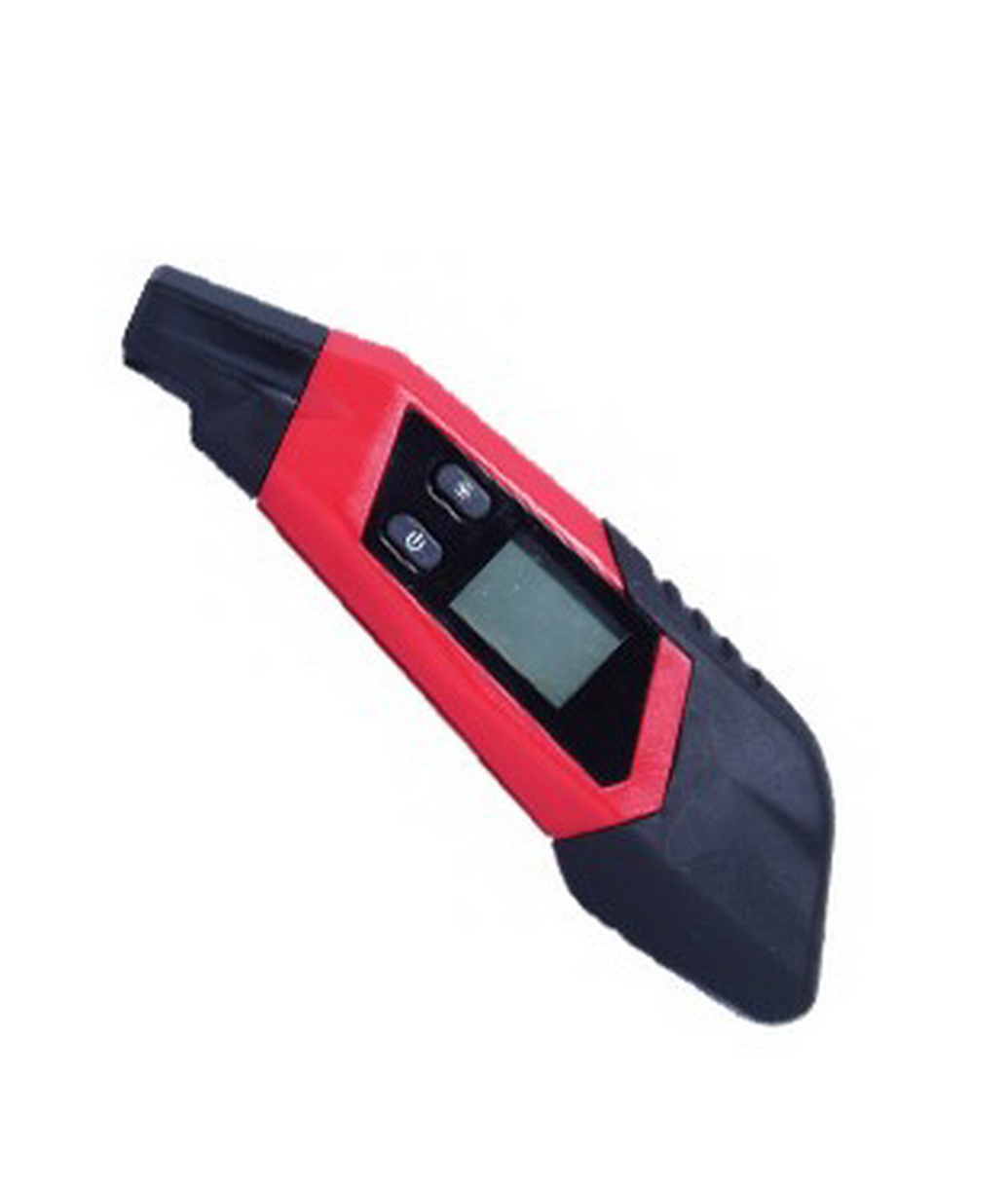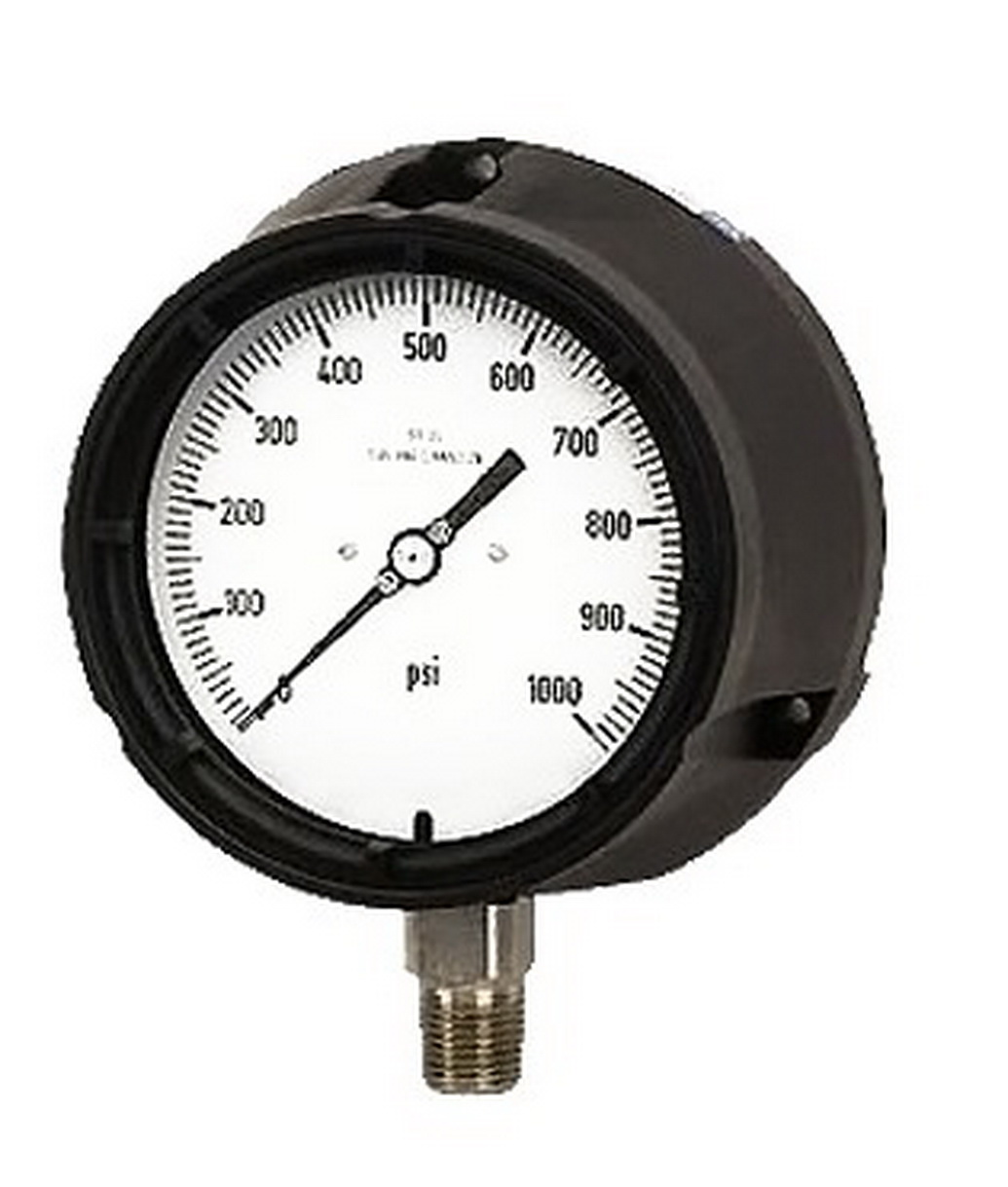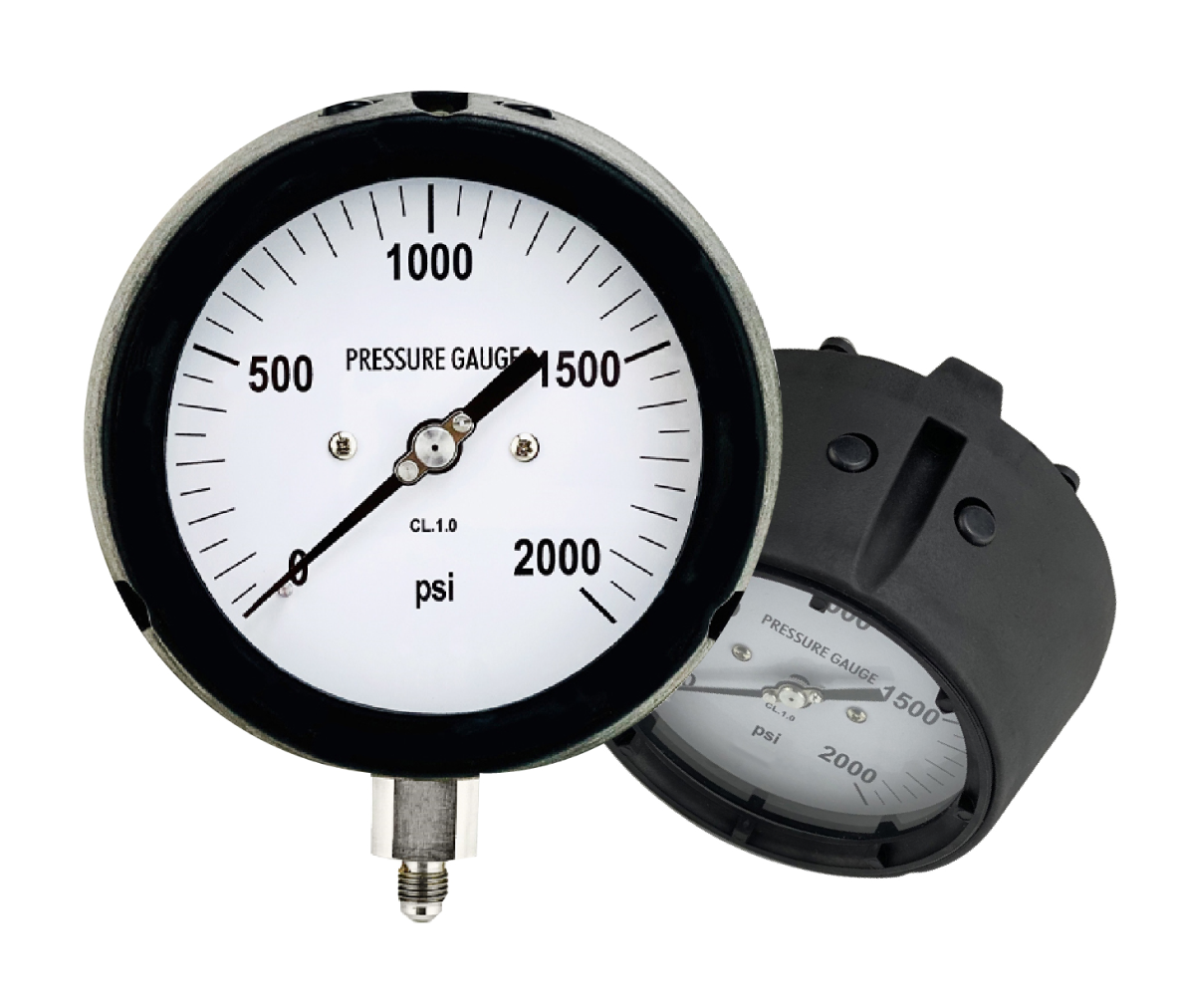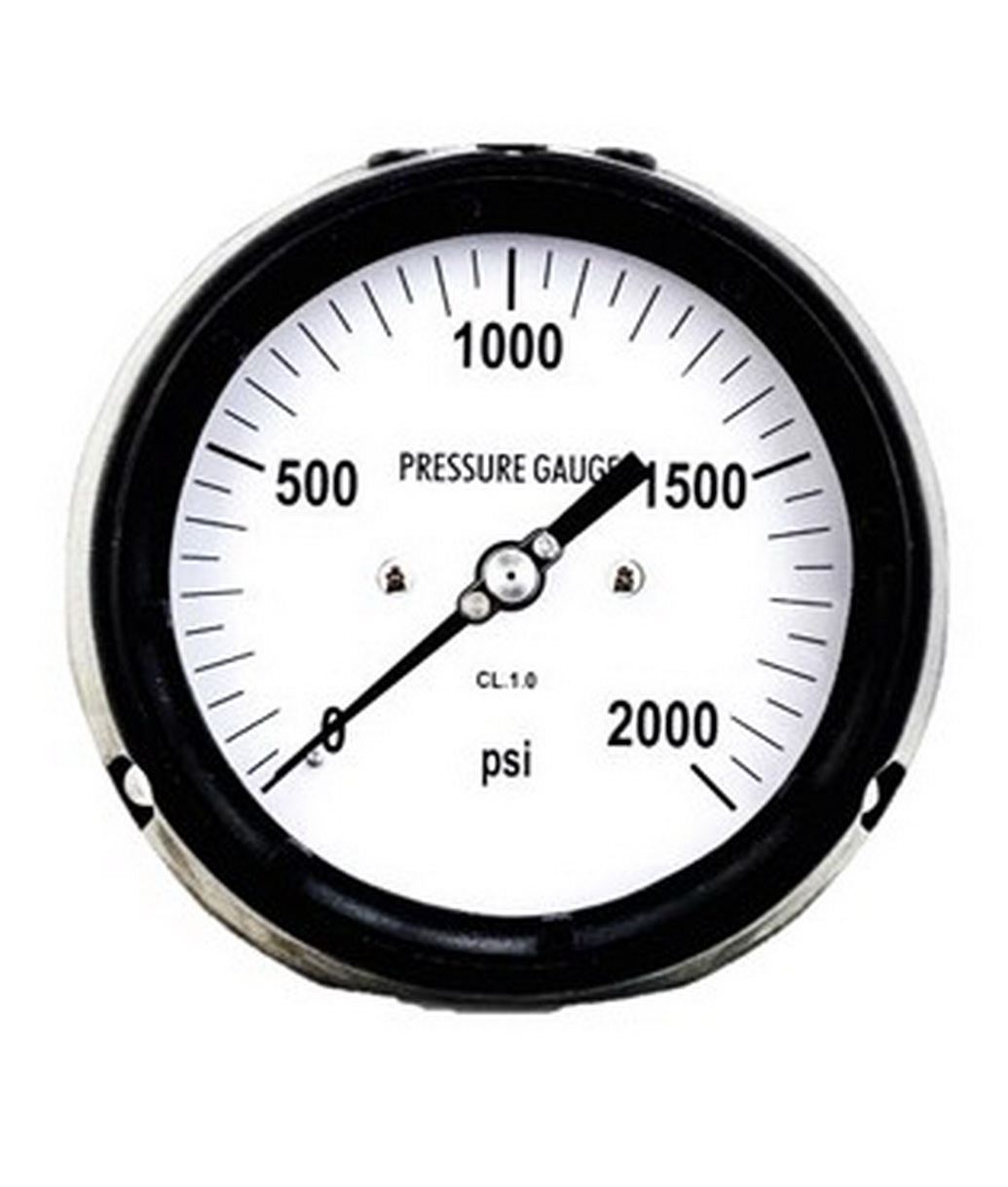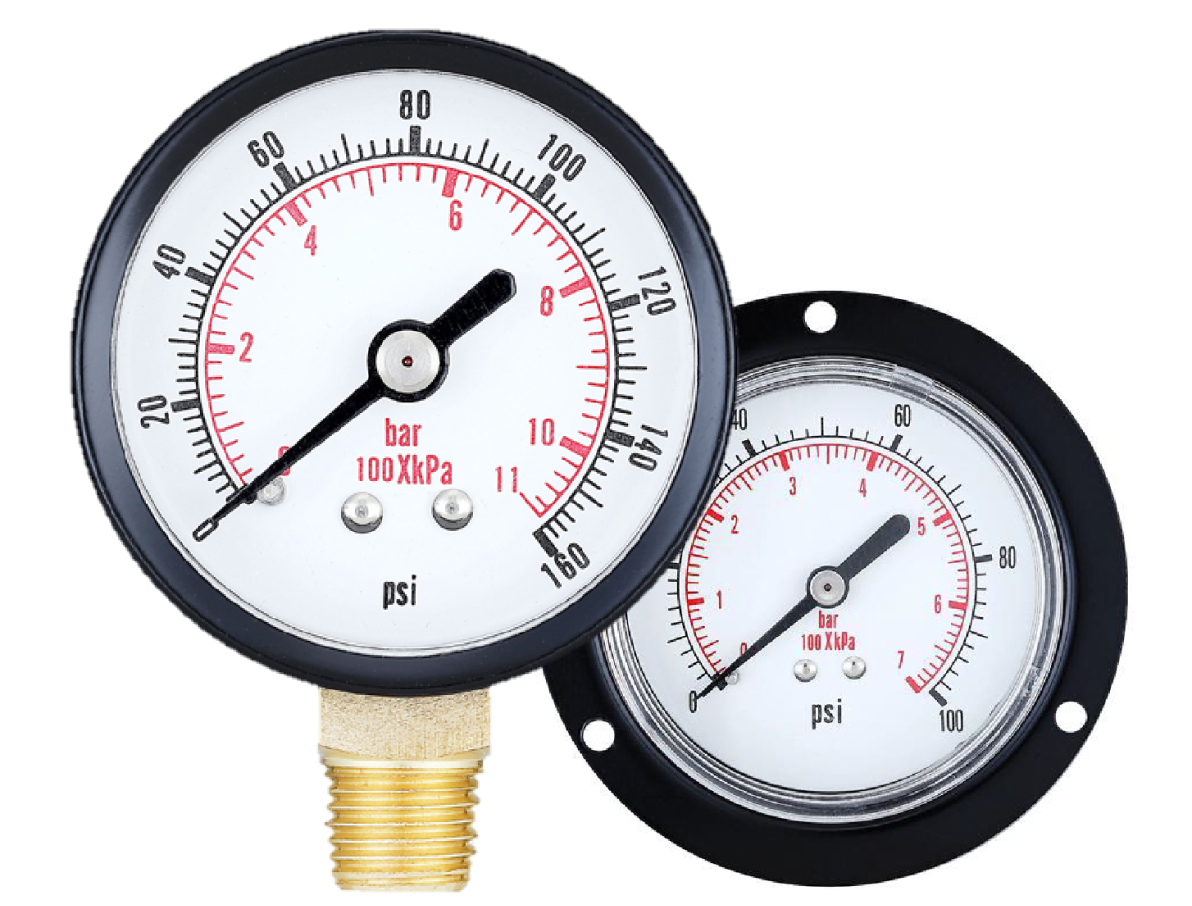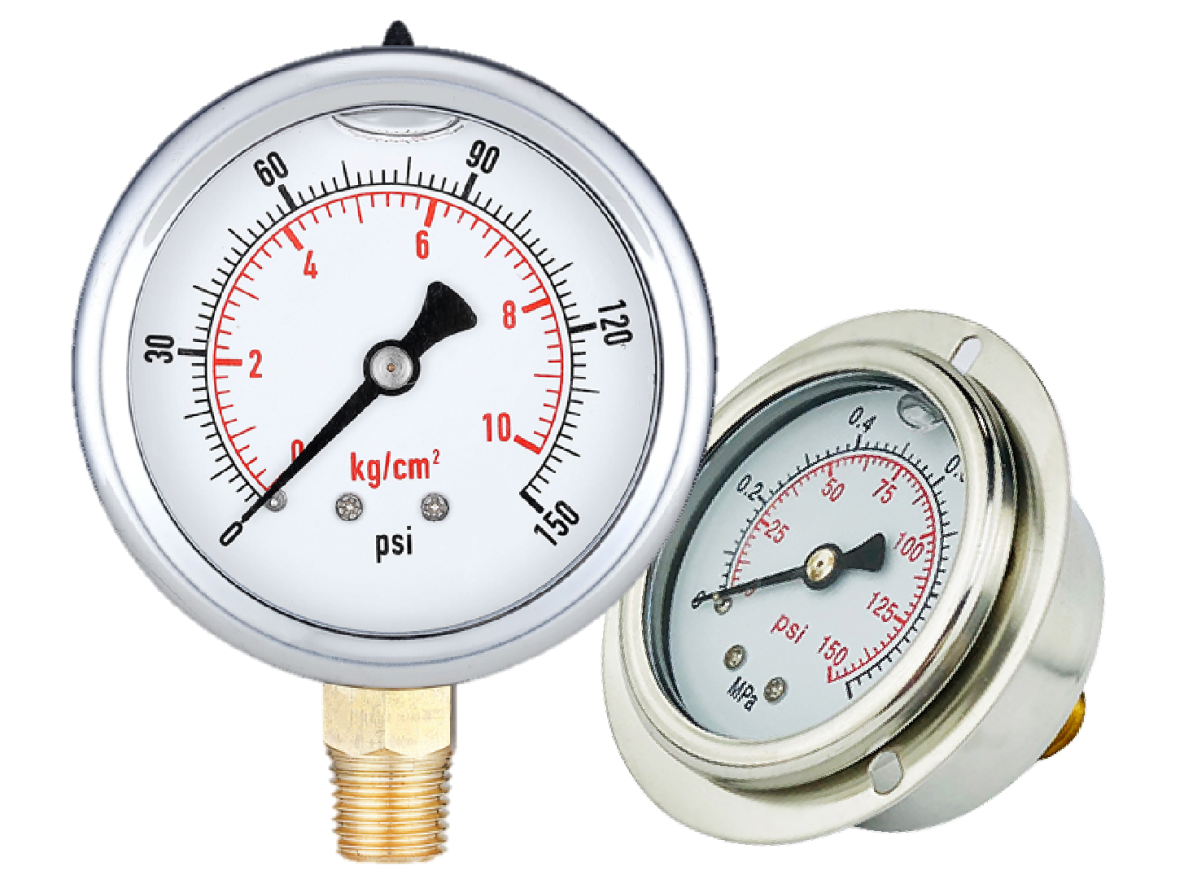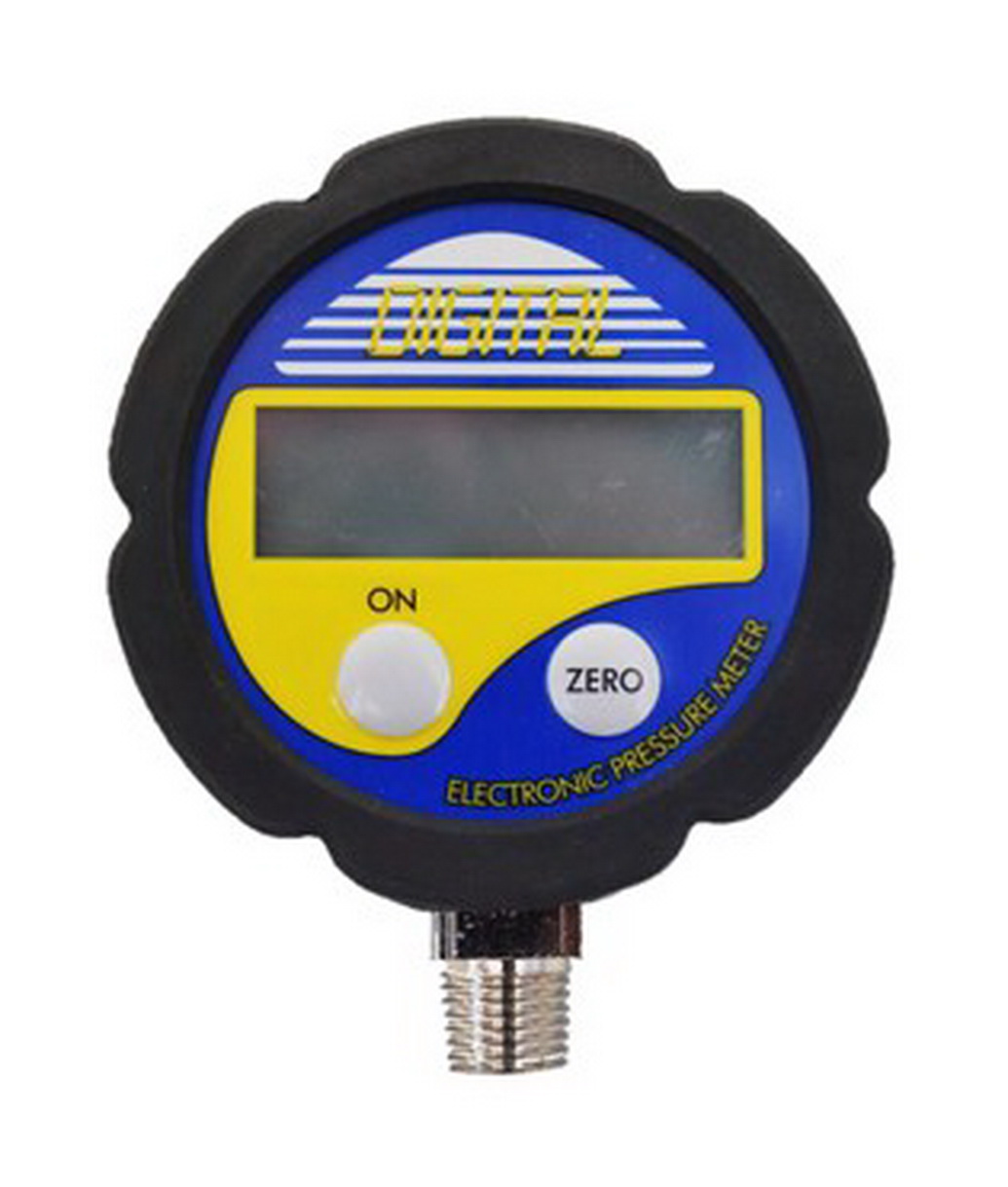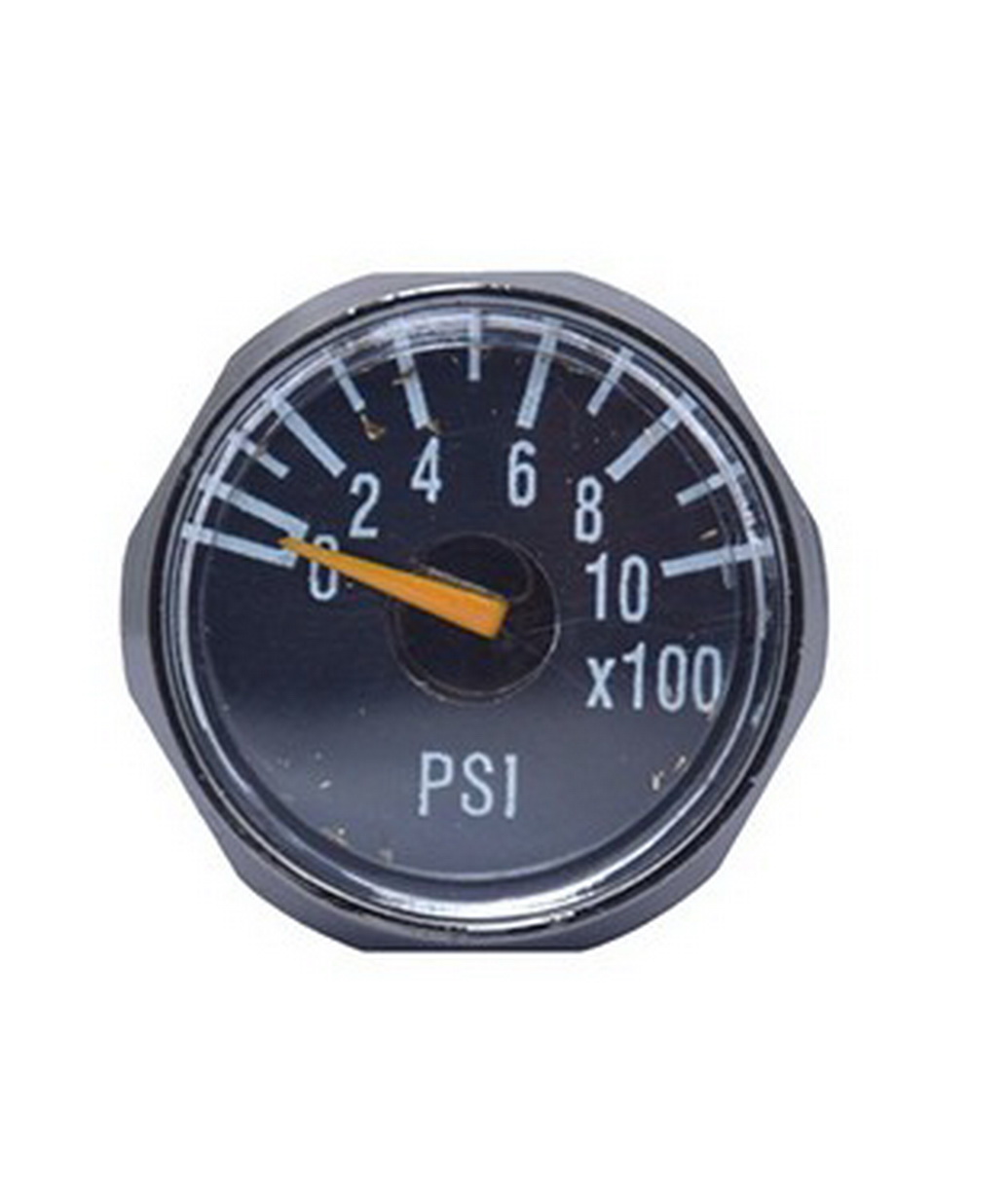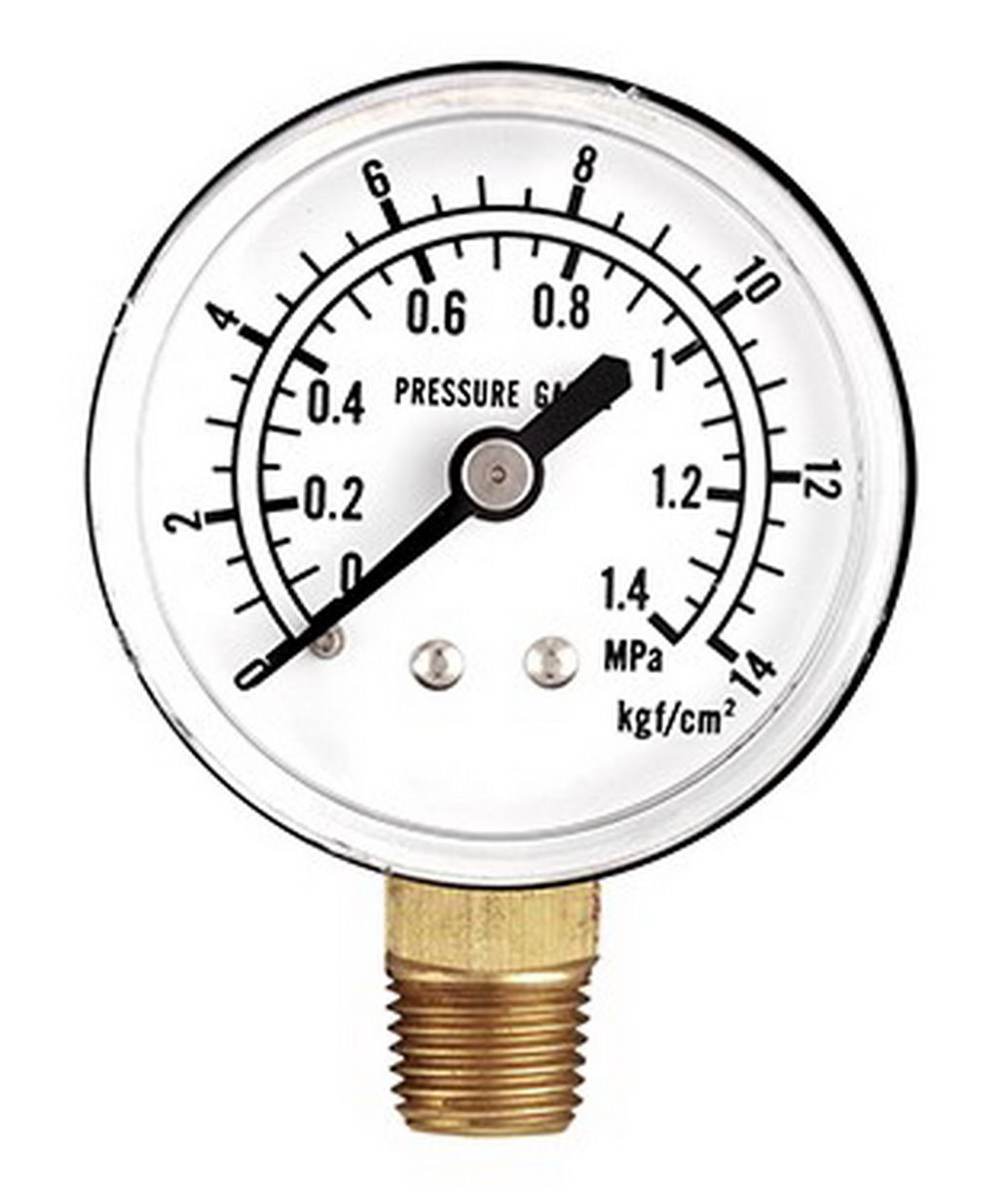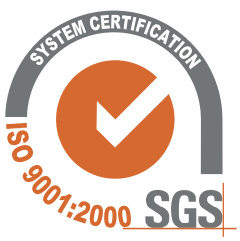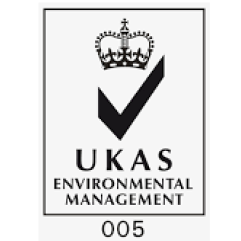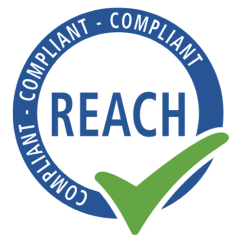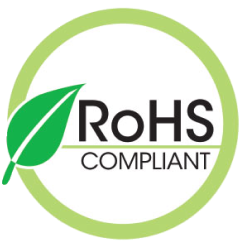Factual data: When selecting a water pressure gauge, there are several factors to consider. These include the application, the amount of pressure involved, the size of the dial, and the required accuracy. Dial sizes can range from 1 ¼ in. to 16 in., so it is important to choose a size that is easily readable from different distances and angles. The gauge should also be readable in low-light conditions, which can be achieved with the use of a retroreflective dial material. There are also various scale options to consider, depending on the unit of measure required. Accuracy is another important factor to consider, as the better the accuracy of the gauge, the more graduations are required. It is recommended to select a gauge with a larger dial size to accommodate the measurement increments. The design pressure is also important to consider, as the gauge should be able to handle the maximum pressure that will be experienced during the application. To protect the gauge from overpressure, a pressure limiting valve can be used. It is also important to regularly check the calibration of the pressure gauge to ensure accurate and safe pressure measurements.
Key Takeaways:
- Consider the application, pressure amount, dial size, and required accuracy when selecting a water pressure gauge.
- Choose a dial size that is easily readable from different distances and angles.
- Ensure the gauge is readable in low-light conditions by using retroreflective dial material.
- Select the appropriate scale options based on the unit of measure required.
- Accuracy is crucial, so choose a gauge with better accuracy and more graduations.
Factors to Consider When Selecting a Water Pressure Gauge
When selecting a water pressure gauge, there are several factors to consider. These include the application, the amount of pressure involved, the size of the dial, and the required accuracy. The right choice of water pressure gauge is crucial to ensure accurate and reliable pressure measurements in various settings, whether industrial or residential.
One of the first factors to consider is the application of the gauge. Different applications may require specific features, such as the ability to withstand high pressures or compatibility with certain water systems. It is essential to choose a gauge that is suitable for the intended use to avoid any potential issues or inaccuracies.
The size of the dial is another important consideration. Dial sizes can range from 1 ¼ in. to 16 in., and the choice depends on the readability required from different distances and angles. A larger dial size is often preferred as it allows for easier reading and accommodates measurement increments more effectively.
| Factors to Consider When Selecting a Water Pressure Gauge |
|---|
| Application |
| Amount of pressure involved |
| Size of the dial |
| Required accuracy |
Accuracy and Calibration
Accurate measurements are crucial when it comes to monitoring water pressure. The accuracy of a water pressure gauge is determined by the number of graduations it has. It is recommended to choose a gauge with better accuracy, as it provides more precise readings, especially in critical applications. Regular calibration is also important to maintain accuracy over time.
- Application
- Amount of pressure involved
- Size of the dial
- Required accuracy
“Accurate measurements are crucial when it comes to monitoring water pressure.”
Additionally, it is important to ensure that the gauge is readable in various conditions, including low-light environments. Retroreflective dial materials can enhance readability by reflecting light back to its source, making it easier to read the gauge even in darker settings.
Lastly, the design pressure of the gauge should be considered. It should be able to handle the maximum pressure that will be experienced during the application. Using a pressure limiting valve can help protect the gauge from overpressure and ensure its longevity.
In summary, when selecting a water pressure gauge, it is important to consider factors such as the application, amount of pressure, dial size, accuracy, readability, and design pressure. By making an informed decision based on these factors, you can ensure that you choose the right water pressure gauge for your specific needs, whether it is for industrial or residential use.
Dial sizes for water pressure gauges can range from 1 ¼ in. to 16 in. It is crucial to select a size that allows for easy readability from various distances and angles in order to accurately monitor the pressure of your water systems.
When choosing the dial size for your water pressure gauge, consider the location where it will be installed. If the gauge is placed far away from where you will be reading it, such as in a control room, a larger dial size may be necessary. This ensures that you can easily see and interpret the pressure readings from a distance.
Additionally, it’s important to consider the angle at which the gauge will be viewed. If the gauge will be mounted at an angle or in a tight space, a smaller dial size may be more appropriate to ensure clear visibility.
Remember, the goal is to accurately monitor the pressure of your water systems, so choose a dial size that allows for easy readability in all relevant situations. By selecting the right dial size, you can ensure that you have a reliable water pressure gauge that meets your specific needs.
| Dial Size (in inches) | Recommended Application |
|---|---|
| 1 ¼ – 2 | Residential water systems |
| 2 ½ – 4 | Commercial water systems |
| 4 ½ – 6 | Industrial water systems |
| 6 ½ – 16 | Large-scale water systems |
Ensuring Readability in Low-Light Conditions
To ensure that your water pressure gauge remains readable even in low-light conditions, consider choosing a gauge with a retroreflective dial material that enhances visibility in dimly lit areas. This special material reflects light back to its source, making it easier to read the gauge in dark environments. Whether you’re working in a basement, utility room, or any other area with limited lighting, a retroreflective dial material can greatly improve the usability of your water pressure gauge.
In addition to the retroreflective dial material, it’s important to ensure that the markings and numbers on the gauge are clear and legible. Opt for a high-contrast design with bold, easy-to-read characters. This will enable you to quickly and accurately interpret the water pressure readings, even in low-light conditions.
Remember, accurate pressure measurements are crucial for the smooth operation of water systems. By investing in a water pressure gauge with retroreflective dial material, you can ensure reliable and readable pressure readings, regardless of the lighting conditions in your working environment.
| Advantages of Retroreflective Dial Material: |
|---|
| Enhances visibility in low-light conditions |
| Reflects light back to its source for improved readability |
| Clear and legible markings for easy interpretation |
| Ensures accurate pressure measurements |
Quote:
“Choosing a water pressure gauge with a retroreflective dial material is a smart decision for anyone working in low-light conditions. It eliminates the frustration of struggling to read the gauge and provides accurate pressure readings at all times.” – Water Pressure Gauge Expert
With the right water pressure gauge equipped with retroreflective dial material, you can confidently monitor and maintain the optimal pressure in your water systems, ensuring efficient performance and preventing potential issues. Don’t compromise on readability – choose a gauge that is designed to be visible, even in low-light conditions.
Scale Options for Measurement
Depending on the unit of measure required, there are various scale options to choose from when selecting a water pressure gauge. The scale on a pressure gauge represents the range of pressure values that can be measured and displayed. It is important to select the appropriate scale to ensure accurate readings and compatibility with the water system.
One commonly used scale option is the psi (pounds per square inch) scale, which is widely used in both residential and industrial applications. The psi scale provides a straightforward measurement of pressure in terms of force per unit area. Another scale option is the bar scale, often used in European countries. The bar scale measures pressure in units of bars, where one bar is equivalent to 14.5 psi. This scale is commonly used in metric-based systems and can provide a more precise measurement for certain applications.
For those working in the scientific or engineering fields, the kilopascal (kPa) scale may be the preferred option. The kPa scale measures pressure in thousands of pascals, which is the metric unit of pressure. This scale is commonly used in laboratory settings and is particularly useful when working with precise measurements and calculations.
When selecting a water pressure gauge, it is important to consider the scale option that best suits the specific application and unit of measure required. By choosing the right scale, users can ensure accurate pressure readings and effective monitoring of their water systems.
| Scale Option | Unit of Measure | Application |
|---|---|---|
| psi | Pounds per Square Inch | Residential, Industrial |
| bar | Bar | European, Metric-based systems |
| kPa | Kilopascal | Laboratory, Scientific, Engineering |
- Choose the appropriate scale option based on the unit of measure required for accurate pressure readings.
- Common scale options include psi, bar, and kPa.
- The psi scale is widely used in residential and industrial applications, while the bar scale is commonly used in European and metric-based systems.
- The kPa scale is often preferred in scientific and engineering fields for precise measurements.
Importance of Accuracy
The accuracy of a water pressure gauge is a crucial factor to consider, as it determines the number of graduations required for precise measurements. When selecting a water pressure gauge, it is important to choose one that offers the necessary level of accuracy for your specific application.
Accurate pressure measurements are essential in various industries, including plumbing, manufacturing, and HVAC systems. Inaccurate readings can lead to inefficient operations, potential damage to equipment, or even safety hazards. Therefore, it is vital to invest in a high-quality water pressure gauge that provides reliable and consistent measurements.
Having a gauge with a higher accuracy rating allows for more detailed monitoring of water pressure. This is particularly important when working with tight tolerances or sensitive systems that require precise adjustments. A gauge with a higher accuracy level will have more graduations on its dial, allowing for finer adjustments and better control over the water pressure.
“Accurate pressure measurements are essential in various industries, including plumbing, manufacturing, and HVAC systems.”
Regular Calibration
To maintain the accuracy of your water pressure gauge, it is recommended to regularly calibrate it. Over time, environmental conditions, vibration, and wear can impact the accuracy of the gauge. By calibrating it periodically, you can ensure that it is providing accurate readings and make any necessary adjustments if deviations are detected.
Consult the manufacturer’s guidelines or work with a professional calibration service to ensure that your water pressure gauge is calibrated correctly. Regular calibration will help you maintain reliable and accurate pressure measurements, ensuring the efficiency and safety of your water systems.
| Accuracy Rating | Number of Graduations | Application |
|---|---|---|
| ±1% | 100 | Industrial applications |
| ±2% | 50 | Residential systems |
| ±5% | 20 | General monitoring |
The table above provides an example of how different accuracy ratings correspond to the number of graduations on the dial. This serves as a general guideline to help you consider the level of accuracy required for your specific application.
Remember, accuracy plays a crucial role in the functionality and efficiency of your water systems. By selecting a water pressure gauge that offers the appropriate accuracy level, regularly calibrating it, and ensuring proper maintenance, you can rely on accurate pressure measurements for optimal system performance.
Selecting a Gauge with Larger Dial Size
To ensure accurate measurements with finer increments, it is recommended to select a water pressure gauge with a larger dial size. The dial size of a pressure gauge plays a crucial role in readability and ease of use. When choosing a dial size, it is important to consider factors such as the viewing distance and angle.
A larger dial size, ranging from 1 ¼ in. to 16 in., allows for better visibility from different distances and angles. This is particularly important in applications where the gauge may be installed in hard-to-reach or poorly lit areas. By opting for a larger dial size, readings can be easily taken and interpreted, enhancing the overall user experience.
Furthermore, a larger dial size also accommodates the need for finer measurement increments. As the accuracy of a pressure gauge increases, the number of graduations on the dial also increases. With a larger dial size, there is more space available to display these finer measurement increments, allowing for more precise readings.
When selecting a water pressure gauge, keep in mind that the design pressure, or the maximum pressure the gauge can handle, should also be considered. To protect the gauge from overpressure, it is advisable to use a pressure limiting valve. Additionally, regular calibration checks should be conducted to ensure accurate and safe pressure measurements.
| Dial Size (in.) | Recommended Applications |
|---|---|
| 1 ¼ – 2 | Residential water systems |
| 2 ½ – 4 ½ | Commercial and industrial water systems |
| 6 – 10 | Large-scale industrial applications |
| 12 – 16 | Specialized industrial applications |
In summary, selecting a water pressure gauge with a larger dial size provides several advantages. It ensures accurate measurements with finer increments, improves readability from different distances and angles, and accommodates applications with higher pressure requirements. By considering the dial size along with other factors such as accuracy, scale options, and design pressure, you can choose the right water pressure gauge for your specific needs.
Design Pressure Considerations
When choosing a water pressure gauge, it is essential to consider the design pressure, ensuring that the gauge can handle the maximum pressure experienced during the application. The design pressure refers to the maximum pressure that the gauge is designed to withstand without causing damage or compromising its accuracy. By selecting a gauge with a suitable design pressure, you can ensure the safety and reliability of pressure measurements in your water system.
It is important to accurately determine the maximum pressure that will be encountered in your specific application. This can be done by analyzing the system’s requirements and taking into account any pressure fluctuations or spikes that might occur. By understanding the maximum pressure, you can select a gauge that is capable of withstanding these conditions and providing accurate readings.
In addition to the design pressure, it is also advisable to install a pressure limiting valve in your water system. This valve acts as a safety measure by preventing the pressure from exceeding a certain threshold, thus protecting the gauge from potential damage and ensuring the overall integrity of the system. Regular maintenance and inspection of the pressure gauge is also crucial to ensure its calibration remains accurate and that it continues to provide reliable pressure measurements.
FAQ
What factors should I consider when selecting a water pressure gauge?
When selecting a water pressure gauge, it is important to consider the application, the amount of pressure involved, the size of the dial, and the required accuracy.
What dial sizes are available for water pressure gauges?
Dial sizes for water pressure gauges can range from 1 ¼ in. to 16 in. It is important to choose a size that is easily readable from different distances and angles.
How can I ensure readability in low-light conditions?
Readability in low-light conditions can be achieved by using a water pressure gauge with a retroreflective dial material.
What scale options are available for measuring water pressure?
The scale options for measuring water pressure depend on the unit of measure required. There are various scale options to choose from.
Why is accuracy important when selecting a water pressure gauge?
The accuracy of the water pressure gauge is important as it determines the number of graduations required. The better the accuracy, the more graduations are needed.
Why should I choose a water pressure gauge with a larger dial size?
Selecting a water pressure gauge with a larger dial size is beneficial as it can accommodate the measurement increments and provide better readability.
What should I consider regarding the design pressure?
When selecting a water pressure gauge, it is important to consider the design pressure. The gauge should be able to handle the maximum pressure experienced during the application. Using a pressure limiting valve can help protect the gauge from overpressure.
How often should I check the calibration of the pressure gauge?
It is recommended to regularly check the calibration of the pressure gauge to ensure accurate and safe pressure measurements.

